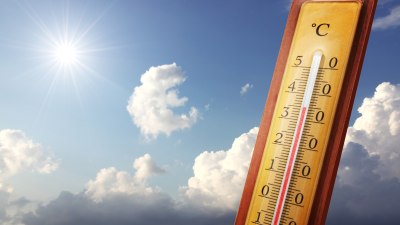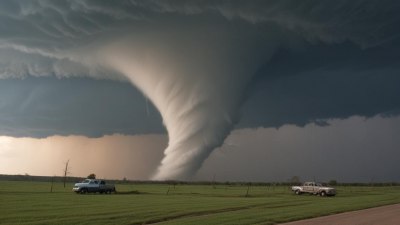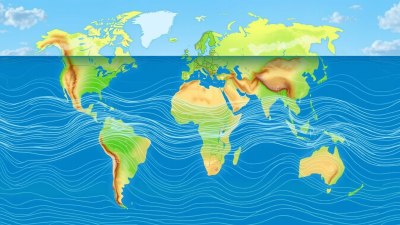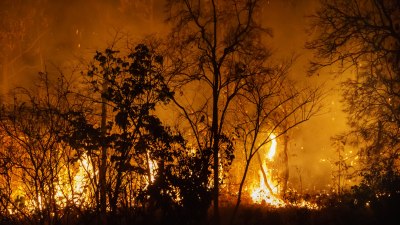How Every City Has That One Spot That’s Weirdly 10 Degrees Warmer
Explore the phenomenon of unusual temperature variations in urban areas and discover the science behind it.
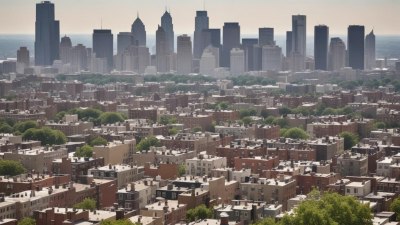
This image was created with the assistance of Freepik
In cities around the globe, one curious phenomenon can be observed: in nearly every urban area, there exists that one spot that consistently registers temperatures notably higher – often 10 degrees warmer or more – than its surrounding areas. This intriguing climatic inconsistency can leave residents puzzled, especially when they step out of one zone and into another, feeling an unexpected warmth enveloping them. Understanding why these temperature anomalies occur is essential in grasping the complex interplay between urban landscapes and climate science.
The Urban Heat Island Effect
The primary reason for the warm anomaly in certain urban spots can be attributed to the Urban Heat Island (UHI) effect. This term refers to the phenomenon whereby urban areas experience higher temperatures than their rural counterparts due to human activities and modifications. The UHI effect arises from several factors. Firstly, urban areas are predominantly covered in dark materials like asphalt and concrete, which absorb and retain heat more effectively than vegetation. Additionally, buildings, vehicles, and other infrastructure contribute to heat generation and retention, both directly and indirectly.
In cities, heat is generated during the day and is released slowly into the night air, a process known as thermal inertia. As a result, urban areas can remain significantly warmer, maintaining elevated temperatures even after sunset. This heat can be particularly pronounced in places where development has outpaced the presence of green spaces, which normally help to cool the environment through evapotranspiration.
Factors Contributing to Localized Warming
Beyond the broader UHI effect, various localized factors can exacerbate temperature differences in specific spots throughout a city. For instance, areas with heavy traffic congestion can experience heightened temperatures due to vehicular emissions and heat from engines. Additionally, certain geographies, such as valleys or low-lying areas, can trap heat and inhibit airflow, further intensifying localized warming.
Another significant contributor is the presence of buildings and structures that block breezes. When wind is obstructed by tall skyscrapers or natural barriers, it can hinder the dispersal of heat, creating warm pockets where air stagnates and temperature increases. Similarly, densely populated areas with little vegetation result in reduced shade, allowing sun exposure to heat pavements and buildings more directly.
Understanding light color and surface material is also crucial in assessing temperature variances. Dark-colored surfaces, be it rooftops or roads, absorb more heat than lighter-colored materials. Places featuring reflective surfaces, such as white roofs or green spaces, can help mitigate heat absorption, leading to cooler microclimates. Hence, even within one city block, you may walk from a black-topped street into a shaded park and notice drastic temperature differences.
The Role of Vegetation
Vegetation plays a vital role in modulating temperatures in urban environments. Trees, plants, and grass act as natural air conditioners, absorbing sunlight and cooling their surroundings through the process of transpiration. Parks and green roofs can significantly lower the ambient temperature in their vicinity, alleviating the UHI effect and creating a more enjoyable environment, especially during hot summer months.
Moreover, urban landscaping, when intentionally designed, can help control heat. The strategic placement of trees along streets or the creation of green corridors facilitates air circulation while providing shade, which can effectively cool the area around it. It’s not uncommon for a small change in tree density or canopy coverage to result in noticeable temperature variances just a few feet away.
Data Collection and Studies
Researchers have been keen on quantifying and analyzing these temperature anomalies through various methods. Temperature sensors placed at different heights, along with satellite imagery, have provided insights into heat distribution across urban landscapes. Using this data, scientists have generated heat maps that illustrate warm zones and their correlation to urban structures and activities, leading to actionable insights for city planners and environmentalists.
Such studies and maps have also revealed consistent patterns relating to socioeconomic status. For instance, neighborhoods categorized as low-income often lack adequate green spaces, leading to increased exposure to heat, impacting residents' health and comfort throughout the year. Conversely, wealthier areas often have more parks and tree cover, drastically changing their local climate.
The Impact on Health and Comfort
Living in areas where elevated temperatures are a norm can have direct ramifications for health. Heat exposure, especially during peak summer months, can lead to heat-related illnesses, including heat exhaustion and heat stroke. Vulnerable groups, such as the elderly, children, and individuals with pre-existing health conditions, are at higher risk. Furthermore, prolonged exposure to elevated temperatures can exacerbate respiratory issues and other health concerns linked with air quality.
City dwellers who frequently traverse from warmer pockets to cooler zones often find themselves adjusting their clothing or hydration levels, inadvertently causing discomfort and impact on daily routines. The disparities can even lead to social inequities as those in less privileged areas face harsher climates relative to their wealthier neighbors, influencing quality of life and socio-economic conditions.
Mitigation Strategies
With knowledge about the UHI effect and localized warming becoming more prevalent, cities worldwide are beginning to adopt measures to combat these issues. Urban planners now emphasize the importance of creating more green spaces, such as parks and community gardens, to counteract heat accumulation. The introduction of green roofs has also gained traction, combining the need for urban development with ecological benefits. These roofs not only insulate buildings but provide a habitat for wildlife, improve air quality, and reduce stormwater runoff.
Beyond green initiatives, policies advocating for cooler materials in construction—like reflective pavements and lighter-colored roofing—are continuously being explored and tested for urban application. These materials can drastically reduce surface temperatures and therefore the overall heat in localized areas, aiding in the battle against UHI.
Community Engagement and Awareness
Community awareness plays an essential role in addressing temperature disparities within cities. Encouraging residents to participate in planting trees and contributing to local greening projects enhances communal spaces while also helping cool neighborhoods. Advocacy campaigns to motivate local governments to prioritize green infrastructure investments can also lead to meaningful improvements in urban climates.
Educational programs highlighting the importance of environmental stewardship can stimulate conversations around climate resilience, enabling communities to take proactive steps in mitigating heat-related challenges collectively. Engaging citizens creates a culture of care for the environment, ensuring sustainable changes are implemented and maintained.
The phenomenon of localized temperature variations within urban settings remains a compelling area of study as cities adapt to ongoing climate challenges. Understanding the myriad factors contributing to these unexpected warm spots equips residents and city planners alike with the knowledge required to create healthier and more resilient cities. By incorporating sustainable practices, promoting green spaces, and raising awareness of the urban heat island effect, communities can work collectively to ensure all residents enjoy the benefits of a balanced and comfortable climate, regardless of where they live.
